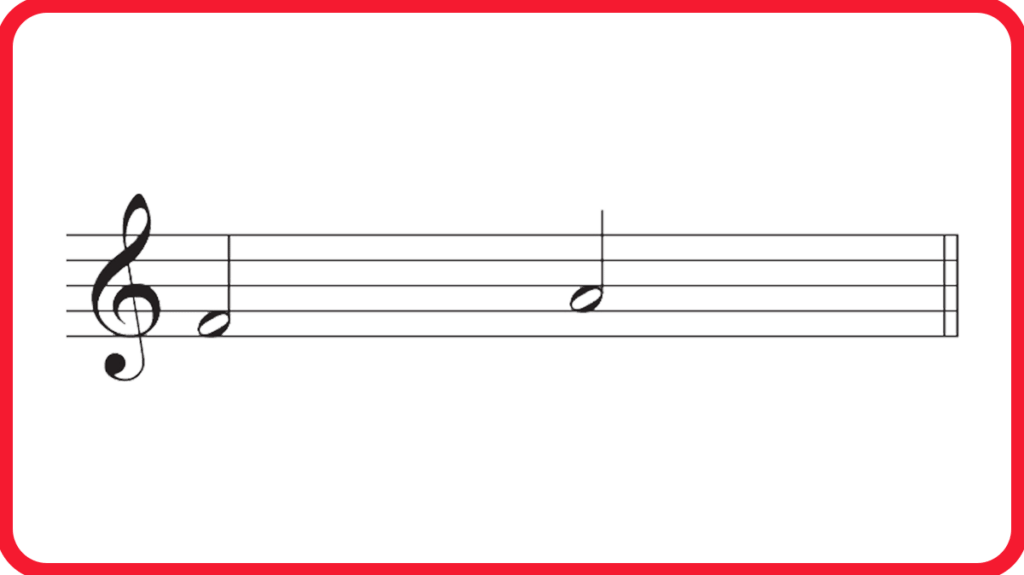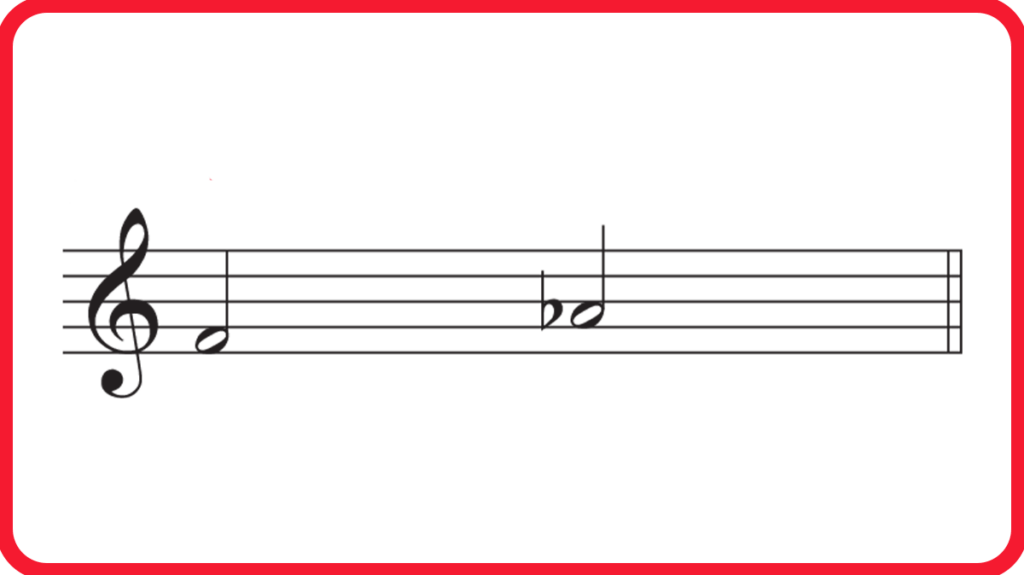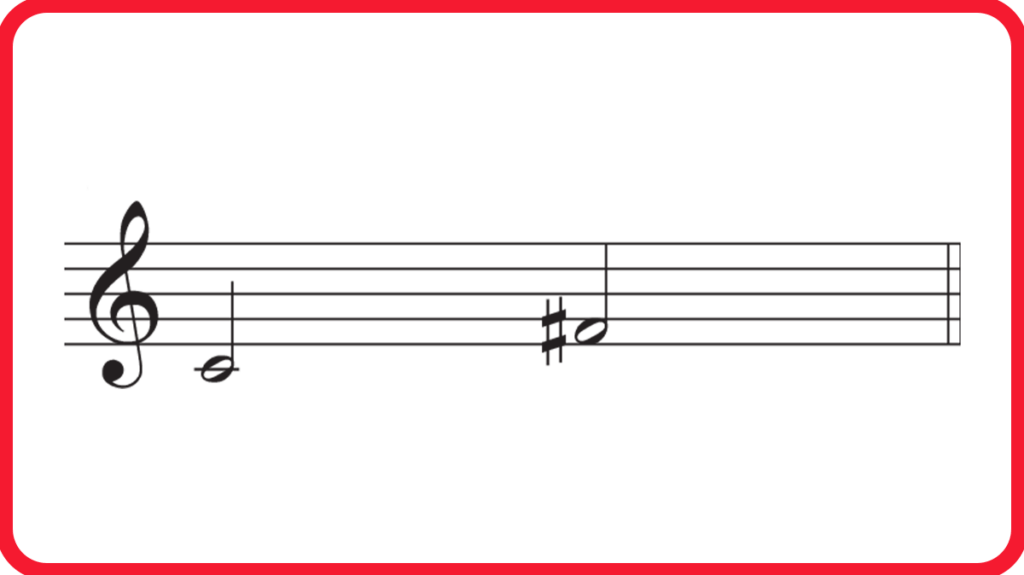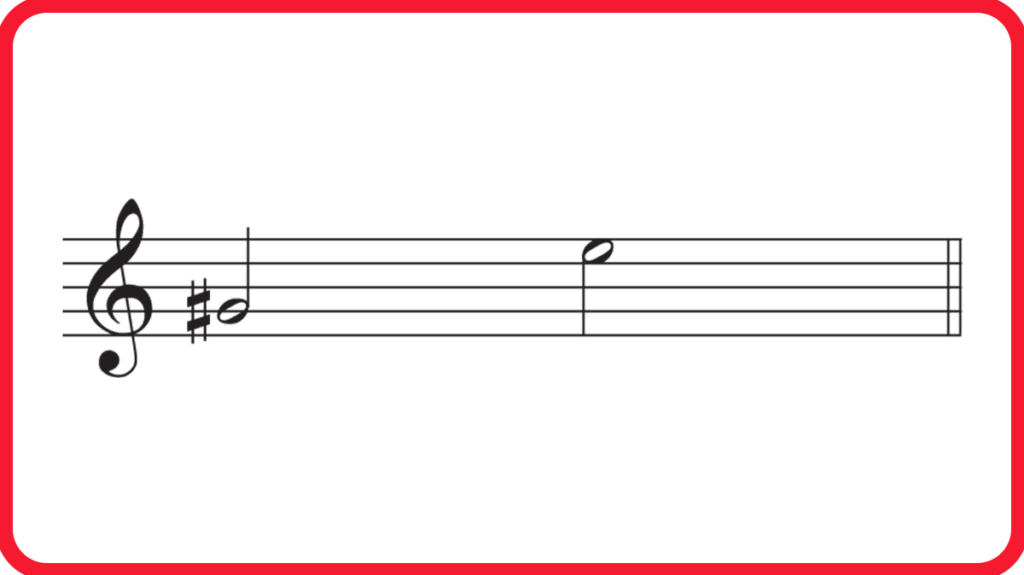
Intervals are the building blocks of music. Understanding piano intervals will help you read music faster, play by ear, improvise, and better understand the relationships between notes, scales, keys, and chords. Intervals are a music theory concept you don’t want to miss!
In this lesson, we’ll explain what intervals are, three ways to understand them, and how to use intervals to become a better piano player.
Table of Contents:
Subscribe to The Note for exclusive interviews, fascinating articles, and inspiring lessons delivered straight to your inbox. Unsubscribe at any time.
In a nutshell, piano intervals are the distance between two notes on the keyboard. The two notes can be a white key and a white key, a black key and a black key, or a white key and a black key.
Examples of intervals include major 3rd, perfect 4th, and diminished 5th. Here’s a breakdown of what that means:
We can think about intervals from a number of angles, including sound, steps, and scale.
> Ultimate Guide to Interval Ear Training
Using this method, we associate each interval with a song and use the song to remember the sound of the interval.
| Interval | Ascending Song | Descending Song |
|---|---|---|
| Minor 2nd | Theme from Jaws | “Für Elise” (Beethoven) |
| Major 2nd | “Happy Birthday” | “Mamma Mia” (ABBA) |
| Minor 3rd | Theme from Spider-Man | “Hey Jude” (The Beatles) |
| Major 3rd | “When the Saints Go Marching In” | “Summertime” (George Gershwin) |
| Perfect 4th | “Summer Nights” from Grease | “Under Pressure” (Queen) |
| Augmented 4th or Diminished 5th | “YYZ” (Rush) | “YYZ” (Rush) |
| Perfect 5th | Theme from Star Wars | Minuet in G Major (Petzold) |
| Minor 6th | “The Entertainer” (Scott Joplin) | “The Entertainer” (Scott Joplin) |
| Major 6th | “My Way” (Frank Sinatra) | “Man In the Mirror” (Michael Jackson) |
| Minor 7th | “Can’t Stop” (Red Hot Chili Peppers) | “The Shadow of Your Smile” (Theme from The Sandpiper) |
| Major 7th | “Take on Me” (A-ha) | “I Love You” (Cole Porter) |
| Perfect Octave | “Over the Rainbow” (Theme from The Wizard of Oz) | “Someone to Watch Over Me” (George Gershwin) |
Interval ear training is useful for playing back melodies and remembering songs, and is a great start for beginners.
Another way to understand intervals is to know the number of whole and half steps between the two notes.
| Interval | Number of Whole Steps | Number of Half Steps |
|---|---|---|
| Perfect Unison | n/a | n/a |
| Minor 2nd | n/a | 1 |
| Major 2nd | 1 | 2 |
| Minor 3rd | 1.5 | 3 |
| Major 3rd | 2 | 4 |
| Perfect 4th | 2.5 | 5 |
| Augmented 4th or Diminished 5th | 3 | 6 |
| Perfect 5th | 3.5 | 7 |
| Minor 6th | 4 | 8 |
| Major 6th | 4.5 | 9 |
| Minor 7th | 5 | 10 |
| Major 7th | 5.5 | 11 |
| Perfect Octave | 6 | 12 |
This is a simple way to remember intervals. But if you prefer not to memorize a bunch of numbers and want to actually understand the theory behind intervals, consider learning the scale method.
This method requires a little knowledge about scales. You’ll ask whether the higher note in an interval belongs to the major scale of the bottom note. If it does, the interval is major or perfect.
In a nutshell, here’s how to calculate intervals using the scale method:
We’ll run this method through a few examples in the next section!
Let’s take the following intervals as examples and practice figuring out what they are. This can be done in two steps: figuring out the number and figuring out the quality.
Count the number of note letters from the bottom note to the top note. This will be the number part of your interval. Ignore any accidentals for now.
Count from F to A: F, G, A. That’s three letters, so this interval is a third.

Ignore the flat for now. Count from F to A: F, G, A. That’s three letters, so this interval is a third.

Ignore the sharp for now. Count from C to F: C-D-E-F. That’s four letters, so this interval is a fourth.

Ignore the sharp for now. Count from G to E: G-A-B-C-D-E. That’s six letters, so this interval is a sixth.

Now let’s see whether these intervals are major, minor, perfect, augmented, or diminished!
Consider the bottom note as the tonic (first note) of a major scale. Then, ask if the top note belongs to that major scale. If it does, you have a major or perfect interval.
If the top note is a half-step lower than what would appear in the bottom note’s major scale, it’s either a minor or diminished interval. Another way to think of this: major intervals that are made smaller by one half-step are minor intervals; perfect intervals that are smaller by one half-step are diminished intervals.
If the top note is a half-step higher than what would appear in the bottom note’s scale, it’s an augmented interval. Major and perfect intervals that are made larger by one half-step are augmented intervals. (Minor intervals that are made larger by one half-step are simply major intervals).
The bottom note is F, so we’ll consider this interval in the context of F major. The top note is A, which is the third note of the F major scale. Therefore, this interval is a major 3rd!

The bottom note is F, so we’ll consider this interval in the context of F major. The top note (A♭) is one half-step lower than A, the third note of the F major scale. Therefore, this interval is a minor 3rd.

The bottom note is C, so we’ll consider this interval in the context of C major. The top note (F#) is one half-step higher than F, the fourth note of the C major scale. If this was C-F, we’d have a perfect 4th. But since this interval is one half-step larger, this is an augmented 4th interval.

This example is a little different because the bottom note, G#, is not a conventional key. To make things easier, we can ignore the G-sharp for now and think in the context of G major. E is the sixth note of the G major scale. Therefore, if this interval was G-E, it’d be a major sixth.

Now, let’s factor that G# back in. Notice that G# “narrows” the major sixth interval by one half-step. A major interval that’s been made smaller by one half-step is a minor interval. Therefore, this is a minor 6th!
Now that we know the math behind intervals, what is all this theory good for? Well, intervals are the building blocks of music. It might not seem obvious right away, but you’ll encounter and use intervals when you play by ear, read sheet music, build chords, and harmonize your own music.
As mentioned before, knowing your intervals can help with playing songs by ear. For example, if the first interval of a song you’re trying to figure out sounds similar to the first two notes of “When the Saints Go Marching In,” it might start with a major 3rd interval.
Knowing your intervals can help you read sheet music faster. If you already know what a fourth, third, or sixth looks like, you can quickly spot these distances in sheet music. Learning how to identify and calculate intervals will also give you a solid, foundational understanding of scales and keys. All this comes together when you read sheet music, which is all about recognizing music theory patterns on a page.
Understanding intervals is essential to playing, recognizing, and building chords. How a chord sounds, after all, depends on the intervals within that chord. Change a major 3rd to a minor 3rd and your major triad becomes a very different sounding minor triad.
Finally, if you want to write your own music, understanding intervals can help you harmonize your melodies. For example, thirds and sixths tend to harmonize very well. Tritones (another name for the augmented 4th or diminished 5th interval) are very crunchy, but they can be perfect for a particular emotional effect.
As a Pianote+ Member, you’ll get access to our 10-step Method, song library, and growing community of piano players just like you. Plus: get coached by world-class pianists who have played with rock stars.
Charmaine Li is a Vancouver writer who has played piano for over 20 years. She holds an Associate diploma (ARCT) from the Royal Conservatory of Music and loves writing about the ways in which music—and music learning—affects the human experience. Charmaine manages The Note. Learn more about Charmaine here.
/marketing/pianote/promos/april/banner-bg-m.webp)
We use cookies for traffic data and advertising. Cookie Policy »
/marketing/pianote/promos/april/banner-title.webp)